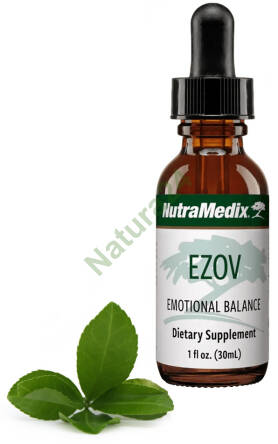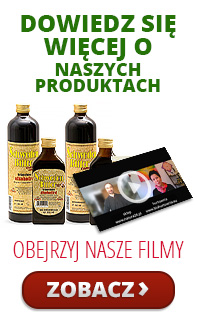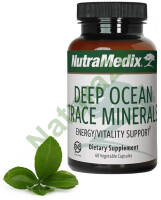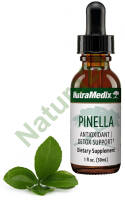Ezov Emotional Balance NutraMedix 30ml
- Add feedback:
- Code: 8325
- Manufacturer: Nutramedix
-
Availability:
 Exists
Exists
- szt.
- 20.45 € 18.57 €

Ezov 30 ml
FOR RESOLVING:
- SUBCONSCIOUS TOXIC EMOTIONS THAT ARE THE ROOT CAUSE OF MANY PHYSICAL SYMPTOMS AND PSYCHOLOGICAL DISORDERS
General Description
Ezov is an extract produced from the flowers of Hyssop officinalis, commonly known as Hyssop. Ezov is primarily used to help the patient resolve subconscious (suppressed) emotions that may affect his/her health. Many healthcare professionals believe that there are 4 major groups of toxins that can contribute to chronic or degenerative disease: 1) microbial biotoxins, 2) heavy metals, 3) other environmental toxins, and 4) emotions. Many doctors also believe that emotions (especially subconscious) cause the patient to more avidly hold on to heavy metals and other toxins. Most of the emotions that affect our health originate before the age of 6 since it is difficult or even impossible for a child to process most traumatic or deep emotional events. Some suppressed emotions can contribute to a medical condition immediately but subconscious emotions can also negatively affect our health many years after the emotions were suppressed. Most practitioners believe that emotions are the most difficult contributor to illness to treat.
Some Reported Medicinal Properties
• ANTISPASMODIC
• ANTIVIRAL
• CARMINATIVE
• DIAPHORETIC
• EXPECTORANT
• REDUCES PHLEGM
• RELAXES PERIPHERAL BLOOD VESSELS
• RESOLVES EMOTIONS
• SUDORIFIC
• TOPICAL ANTI-INFLAMMATORY
Medical Conditions
(peer-reviewed journals)
ANXIETY
Salehi, A., & Setorki, M. (2017). Effect of Hyssopus officinalis essential oil on chronic stress-induced memory and learning impairment in male mice. Bangladesh Journal of Pharmacology, 12(4), 448-454. Full Article
HIV
Gollapudi, S., Sharma, H. A., Aggarwal, S., Byers, L. D., Ensley, H. E., & Gupta, S. (1995). Isolation of a previously unidentified polysaccharide (MAR-10) from Hyssop officinalis that exhibits strong activity against human immunodeficiency virus type 1. Biochemical and Biophysical Research Communications, 210(1), 145-151. Full Article
Kreis, W., Kaplan, M. H., Freeman, J., Sun, D. K., & Sarin, P. S. (1990). Inhibition of HIV replication by Hyssop officinalis extracts. Antiviral Research, 14(6), 323-337. Full Article
HSV
Behbahani, M. (2009). Anti-viral activity of the methanolic leaf extract of an Iranian medicinal plant “Hyssopus officinalis” against herpes simplex virus. J Med Plant Res, 3, 1118-1125. Full Article
Medicinal Properties
(peer-reviewed journals)
ANTIFUNGAL
Hristova, Y., Wanner, J., Jirovetz, L., Stappen, I., Iliev, I., & Gochev, V. (2015). Chemical composition and antifungal activity of essential oil of Hyssopus officinalis L. from Bulgaria against clinical isolates of Candida species. Biotechnology & Biotechnological Equipment, 29(3), 592-601. Full Article
Fraternale, D., Ricci, D., Epifano, F., & Curini, M. (2004). Composition and antifungal activity of two essential oils of hyssop (Hyssopus officinalis L.). Journal of Essential Oil Research, 16(6), 617-622. Full Article
Letessier, M. P., Svoboda, K. P., & Walters, D. R. (2001). Antifungal activity of the essential oil of hyssop (Hyssopus officinalis). Journal of Phytopathology, 149(11‐12), 673-678. Full Article
ANTI-INFLAMMATORY
Ma, X., Ma, X., Ma, Z., Wang, J., Sun, Z., Yu, W., ... & Ding, J. (2014). Effect of Hyssopus officinalis L. on inhibiting airway inflammation and immune regulation in a chronic asthmatic mouse model. Experimental and Therapeutic Medicine, 8(5), 1371-1374. Full Article
ANTIMICROBIAL
KIZIL, S., HAŞİMİ, N., Tolan, V., Kilinc, E., & KARATAŞ, H. (2010). Chemical composition, antimicrobial and antioxidant activities of hyssop (Hyssopus officinalis L.) essential oil. Notulae Botanicae Horti Agrobotanici Cluj-Napoca, 38(3), 99-103. Full Article
Mazzanti, G., Battinelli, L., & Salvatore, G. (1998). Antimicrobial properties of the linalol‐rich essential oil of Hyssopus officinalis L. var decumbens (Lamiaceae). Flavour and Fragrance Journal, 13(5), 289-294. Full Article
Mahboubi, M., Haghi, G., & Kazempour, N. (2011). Antimicrobial activity and chemical composition of Hyssopus officinalis L. essential oil. Journal of Biologically Active Products from Nature, 1(2), 132-137. Full Article
ANTIOXIDANT
Vlase, L., Benedec, D., Hanganu, D., Damian, G., Csillag, I., Sevastre, B., ... & Tilea, I. (2014). Evaluation of antioxidant and antimicrobial activities and phenolic profile for Hyssopus officinalis, Ocimum basilicum and Teucrium chamaedrys. Molecules, 19(5), 5490-5507. Full Article
Alinezhad, H., Azimi, R., Zare, M., Ebrahimzadeh, M. A., Eslami, S., Nabavi, S. F., & Nabavi, S. M. (2013). Antioxidant and antihemolytic activities of ethanolic extract of flowers, leaves, and stems of Hyssopus officinalis L. Var. angustifolius. International Journal of Food Properties, 16(5), 1169-1178. Full Article
Ebrahimzadeh, M. A., Nabavi, S. M., Nabavi, S. F., Bahramian, F., & Bekhradnia, A. R. (2010). Antioxidant and free radical scavenging activity of H. officinalis L. var. angustifolius, V. odorata, B. hyrcana and C. speciosum. Pak J Pharm Sci, 23(1), 29-34. Full Article
Fernández‐López, J., Sevilla, L., Sayas‐Barberá, E., Navarro, C., Marin, F., & Pérez‐Alvarez, J. A. (2003). Evaluation of the antioxidant potential of hyssop (Hyssopus officinalis L.) and rosemary (Rosmarinus officinalis L.) extracts in cooked pork meat. Journal of Food Science, 68(2), 660-664. Full Article
Srivastava, A., Awasthi, K., Kumar, B., Misra, A., & Srivastava,S. (2018). Pharmacognostic and Pharmacological Evaluation of Hyssopus officinalis L. (Lamiaceae) Collected fromKashmir Himalayas, India. Pharmacognosy Journal, 10(4). Full Article
Jahantigh, O., Najafi, F., Badi, H. N., Khavari-Nejad, R. A.,& Sanjarian, F. (2016). Changes in antioxidant enzymes activities and proline, total phenol and anthocyanine contents in Hyssopus officinalis L. plants under salt stress. Acta Biologica Hungarica, 67(2), 195-204. Full Article
Fathiazad, F., Mazandarani, M., & Hamedeyazdan, S. (2011). Phytochemical analysis and antioxidant activity of Hyssopus officinalis L. from Iran. Advanced pharmaceutical bulletin,1(2), 63. Full Article
Soleimani, H., Barzegar, M., Sahari, M. A.,& Naghdi Badi, H. (2011). An investigation on the antioxidant activities of Hyssopus officinalis L. and Echinacea purpurea L. plant extractsin oil model system. Journal of Medicinal Plants,1(37), 61-72. Full Article
ANTIBACTERIAL
Baj, T., Korona-Głowniak, I., Kowalski, R., & Malm, A. (2018). Chemical composition and microbiological evaluation of essential oil from Hyssopus officinalis L. with white and pink flowers. Open Chemistry, 16(1), 317-323. Full Article
ANTILEISHMANIAL
Hikal, W. M., & Said-Al Ahl, H. A. (2017). Anti-leishmanial Activity of Hyssopus officinalis: A Review. International Journal of Environmental Planning and Management, 3(2), 10-15. Full Article
Tabatabaie, F., Golestani, M., & Lame Akhlaghi, A. H. (2014). In Vitro Activity of Hyssopus Officinalis, Tussilage Farfara, Carum Copticum Extracts Against Leishmania Major in Iran. Advanced Studies in Biology, 6(4), 193-201. Full Article
Akhlaghi, L., Yeganeh, M., Maleki, F., Golestani, M., Noori, M., Ghelman, M., & Tabatabaie, F. (2014). Antileishmanial activity of Hyssopus officinalis, Tussilage farfara, Carum copticum extracts in mice infected with Leishmania major. International Journal of Herbal Medicine, 2(2), 142-145. Full Article
VARIOUS PROPERTIES
Tahir, M., Khushtar, M., Fahad, M., & Rahman, M. A. (2018). Phytochemistry and pharmacological profile of traditionally used medicinal plant Hyssop (Hyssopus officinalis L.). Journal of Applied Pharmaceutical Science Vol, 8(07), 132-140. Full Article
Fathiazad, F., Hamedeyazdan, S. (2011).A review on Hyssopus officinalis L.: Composition and biologicalactivities. African Journal of Pharmacy and Pharmacology Vol. 5(17),pp. 1959-1966. Full Article
Patient Reports
“I have never slept as good as I do now since taking EZOV. My dreams are much more pleasant. There is hardly any taste and I have had no side effects.” – C.C
“My mother-in-law suffers from chronic insomnia. This product has really helped her to regulate her hormonal balance and sleep better!” – X.A
“I was taking another natural product for several months and didn't feel it help much . Since taking Ezov for about 2 weeks I've been able to have a peaceful and longer sleep as well as vivid dreams.” - A.K
"I noticed a big difference from my first dose and I only got better with each dose. I highly recommend Ezov Emotional Balance." -C.S.
"Ezov gave my daughter a second chance. She suffered childhood trauma and has had times when they resurfaced. Therapy didn't work, but with Ezov, she's been blessed to return to college to complete her degree in child psychology." -R.O.
Dosage Information
Start with 1 drop in 4 oz. of water daily just before bedtime. Add one drop per dose every three days until reaching 8 drops per night (for a small adult) by day 22 or 10 drops (for a larger adult) by day 28. Take for at least two months at full dosage. If not able to sleep well, reduce the dosage and/or the rate of build-up.
Safety Information
An acute oral toxicity study was conducted by the University of Guayaquil, Ecuador concluding that Ezov did not produce toxic effects, thus the product is considered practically innocuous for humans when administered in the acute form. Therefore; studies of acute toxicity at higher doses in humans are not necessary. Full Article







Wszystko przebiegło pomyślnie. Polecam!
SUPER KONTAKT, B. SZYBKA DOSTAWA, SUPER PRODUKT, SUPER SPRZEDAJACY - POLECAM BAAAARDZO
Z ogromną przyjemnością wystawiam komentarz POZYTYWNY!!! Wszystko sprawnie, miło i przyjemnie!!! Przesyłka ekspresowa.!!! GORĄCO POLECAM
Przesyłka wysłana w błyskawicznym tempie Juz na drugi dzień rano.Polecam w 100%.
olejek rycynowy rewelacyjny